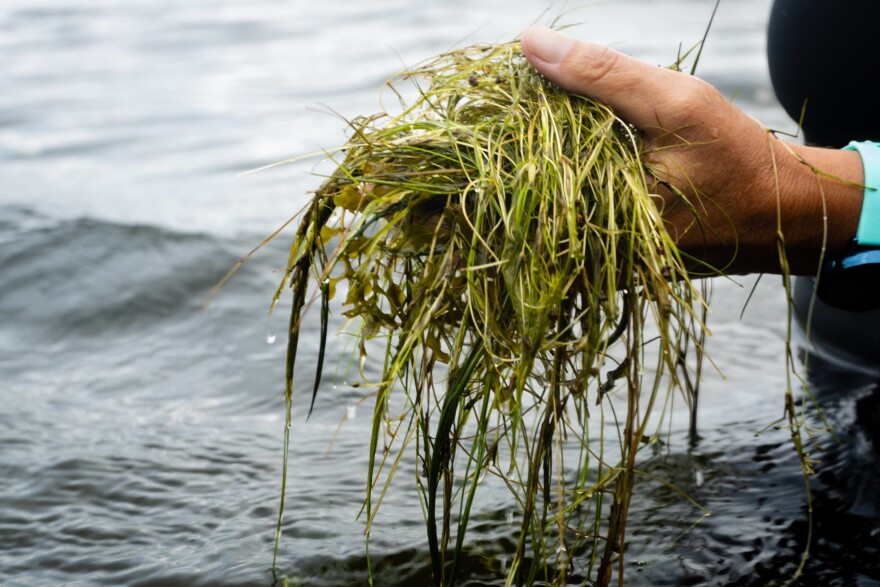Seagrass growth in the Chesapeake Bay and its tributaries increased in 2023 by 7%, according to newly released data, giving scientists another reason to believe that water quality in the Bay is improving.
Seagrasses, which scientists and ecologists call “submerged aquatic vegetation,” or SAV, shelter animals such as blue crabs and other fish. They make the water clear for swimming and also buffer against ocean acidification.
While a 7% growth may sound modest, Brooke Landry, who runs SAV programming at the state Department of Natural Resources, said a good range for yearly growth is between 3 and 5%.
“[SAV] responds very quickly to improvements in water quality by expanding and growing, and it also responds quickly to degradation of water quality by dying back, so we can see that from year to year,” said Landry.
The grasses offer a visual representation of aquatic health, one that doesn’t need testing and sending out samples, she said.
The SAV Restoration and Monitoring Program at the Virginia Institute of Marine Science mapped 79,234 acres of underwater grasses using aerial and satellite imagery and estimated an additional 3,703 acres of coverage in portions of the Potomac River that cannot be mapped due to security reasons.
The Chesapeake Bay is grouped into four different salinity zones. In 2023, the mesohaline — or moderately salty — zone had widespread gains. In the polyhaline — or very salty — zone, eelgrass was abundant, which Landry called “exciting news” after eelgrass experienced heavy losses in 2019. Eelgrass growth is historically low because of increasing temperatures in the Bay, she explained.
The growth wasn’t even, though.
Some freshwater zones and “slightly salty” parts of the Chesapeake saw SAV declines, with particular losses in the Gunpowder and Middle rivers. It’s not certain what caused those decreases, but Landry suspects phytoplankton blooms and suspended sediment observed in the spring and summer of 2022 could be to blame.
“The fact that we lost so many acres of grass in the upper Bay and the freshwater areas and still saw an overall improvement and expansion of SAV throughout the Bay is really good,” said Landry. However, she added that there is still room for plenty of improvement.
The Chesapeake Bay is behind schedule on meeting 2025 SAV goals as outlined in the Chesapeake Bay Watershed Agreement. The agreement, which is an accord of six states and the District of Columbia focused on watershed restoration, outlines a goal of 130,000 acres of underwater grasses across the bottom of the Bay and its tributaries by next year. Currently there are about 83,000 acres of SAV.
Research on underwater grasses shows that reducing pollution is critical for the restoration of the vegetation.
“We must dramatically reduce pollution long-term to give the Bay's underwater grasses a fighting chance in the face of climate change and rising seas,” Alison Prost, Vice President for Environmental Protection and Restoration at the nonprofit Chesapeake Bay Foundation, said in an emailed statement. “The seven percent growth indicated in this year’s survey marks the third annual increase in Bay grasses, a bright spot in a longer history of mixed results for Bay grass restoration.”
It’s the latest in a spate of good news for the Chesapeake Bay. Earlier this year, the University of Maryland gave the Bay a C+ for overall health on its annual report card, its highest grade in 20 years. Also this year, scientists released a study showing that oyster sanctuary efforts are thriving.










